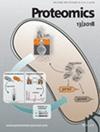Proteomics Reveals AP-2 Complex Depletion Suppressing Listeria monocytogenes Intracellular Replication
Abstract
Listeria monocytogenes represents a significant zoonotic pathogen that completes its infectious cycle by invading intestinal epithelial cells, breaching mucosal barriers, and disseminating to target organs such as the liver and spleen. During this process, the innate immune system, particularly macrophages and dendritic cells, plays a pivotal role in pathogen clearance. In this study, we established an in vitro infection model utilizing Raw264.7 macrophages, DC2.4 dendritic cells, HeLa, and Caco-2 epithelial cells. We demonstrated L. monocytogenes infection significantly upregulates the expression of Ap2s1, a key subunit of the AP-2 adaptor complex, in host cells. Subsequent proteomic analysis revealed that two additional AP-2 complex subunits, Ap2m1 and Ap2a2, functionally cooperate with Ap2s1 during infection. Genetic knockout experiments confirmed that specific silencing of any of these three subunits, Ap2m1, Ap2a2, or Ap2s1, markedly inhibited intracellular bacterial proliferation. These findings establish the AP-2 complex as a promising molecular target for developing novel therapeutic strategies against L. monocytogenes infections.
Summary
-
This study unveils a critical role of the AP-2 adaptor complex in L. monocytogenes intracellular replication, identifying three subunits, Ap2s1, Ap2m1, and Ap2a2, as key host factors exploited by the pathogen.
-
Using proteomics and CRISPR/Cas9-mediated knockout models, we demonstrate that L. monocytogenes infection upregulates Ap2s1 expression, and depletion of AP-2 subunit significantly impairs bacterial proliferation.
-
Our findings reveal that AP-2 facilitates post-phagosomal cytosolic replication, independent of bacterial cell-to-cell spread.
-
This study demonstrates that the AP-2 complex may represent a host factor exploited by L. monocytogenes to promote intracellular replication, offering a novel host-directed therapeutic target to combat antibiotic-resistant strains.


 求助内容:
求助内容: 应助结果提醒方式:
应助结果提醒方式:


